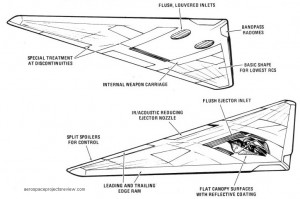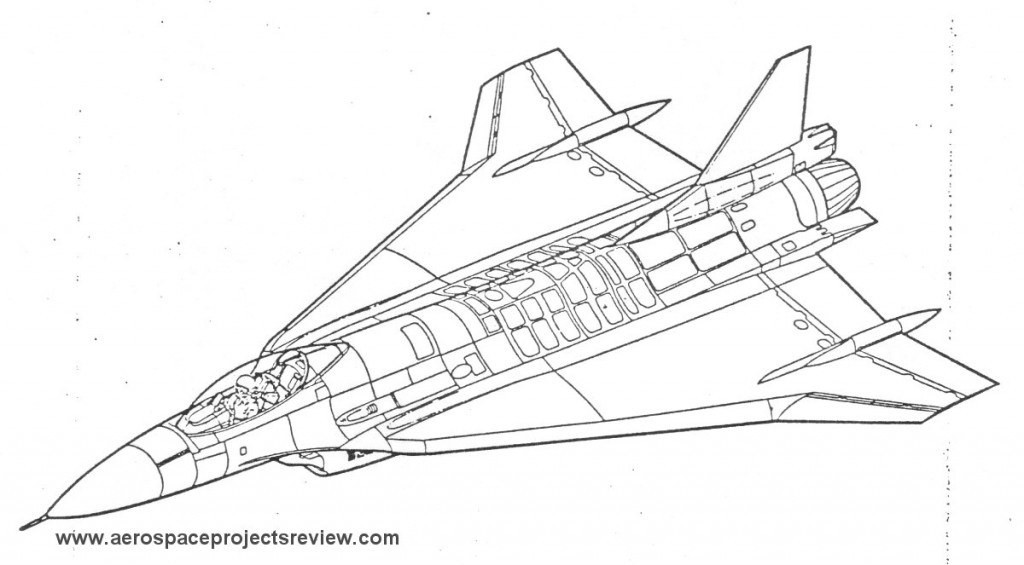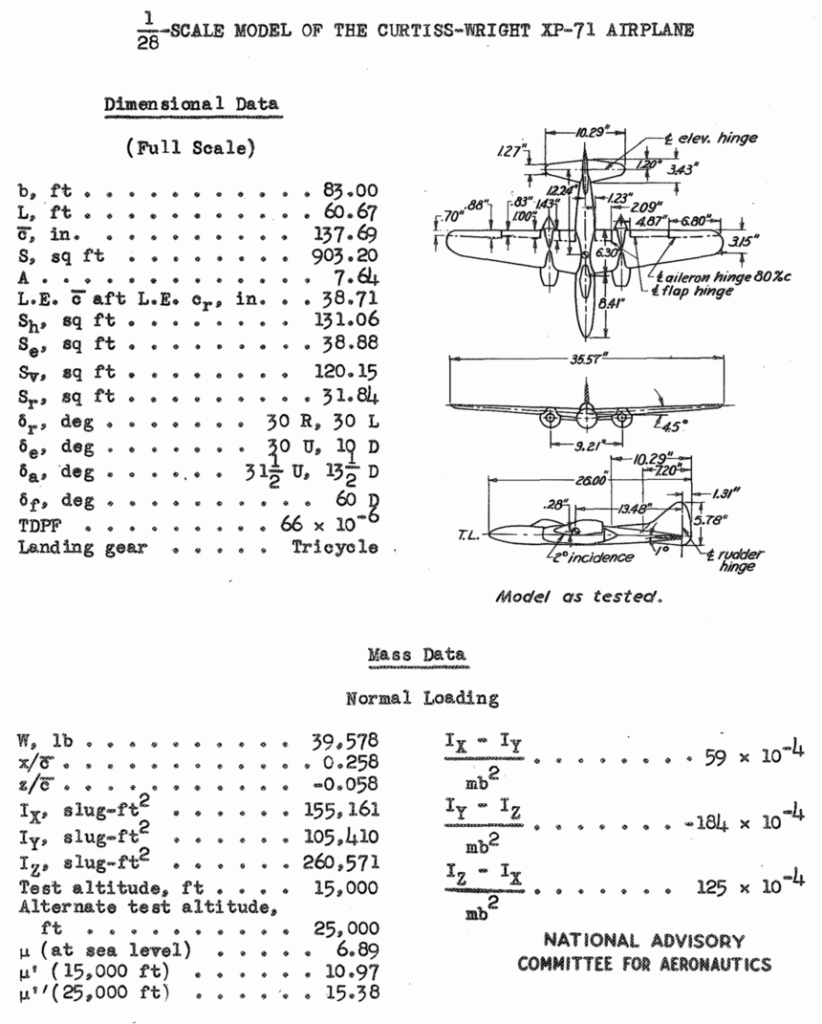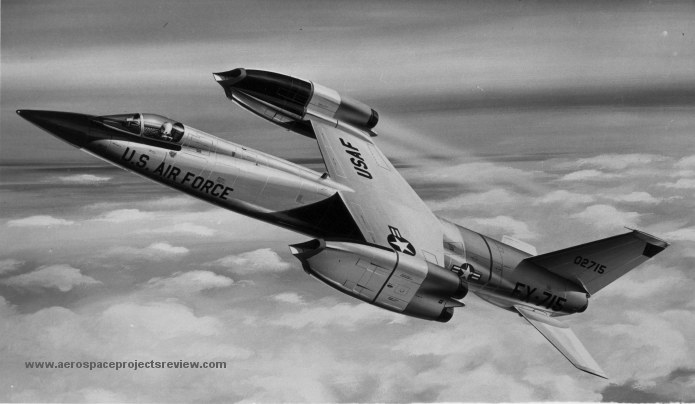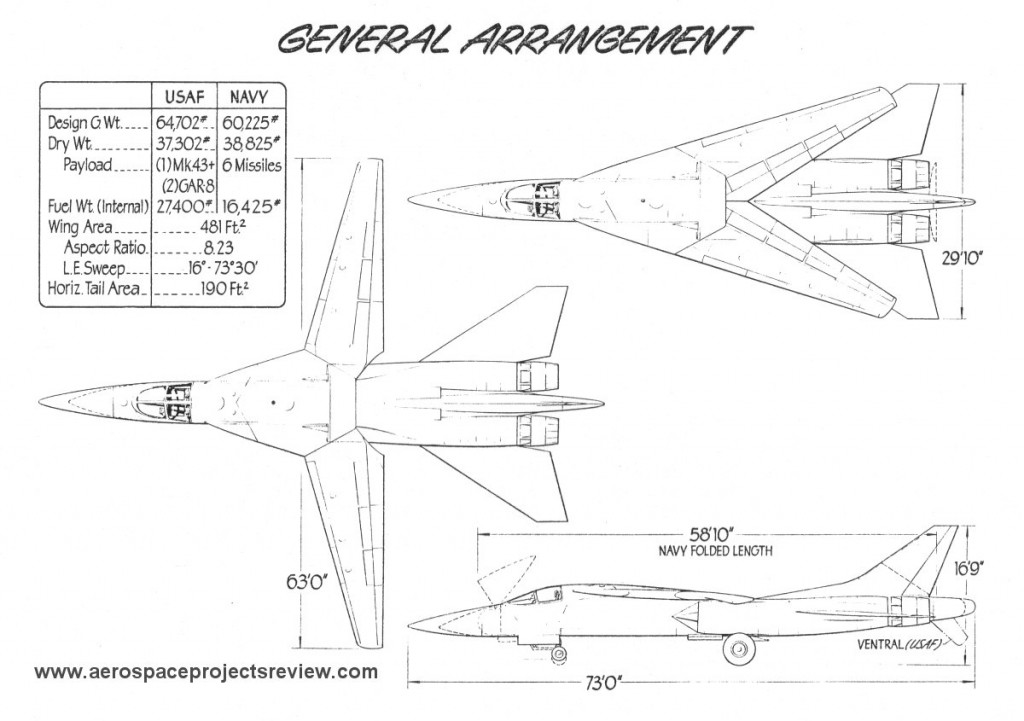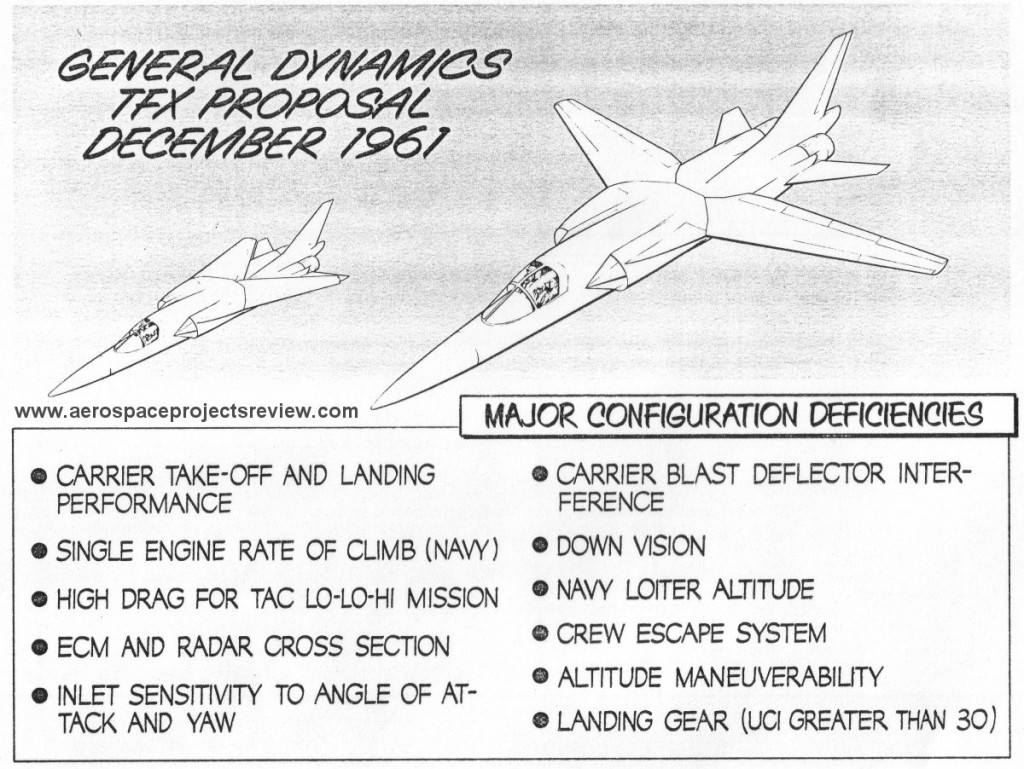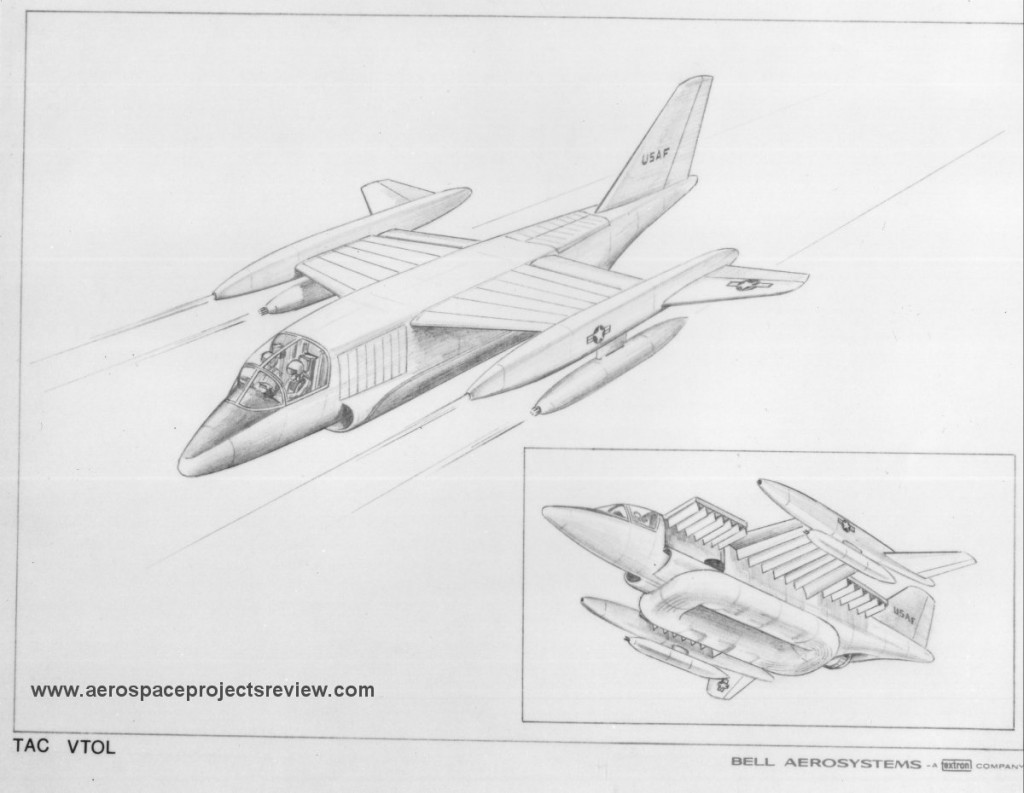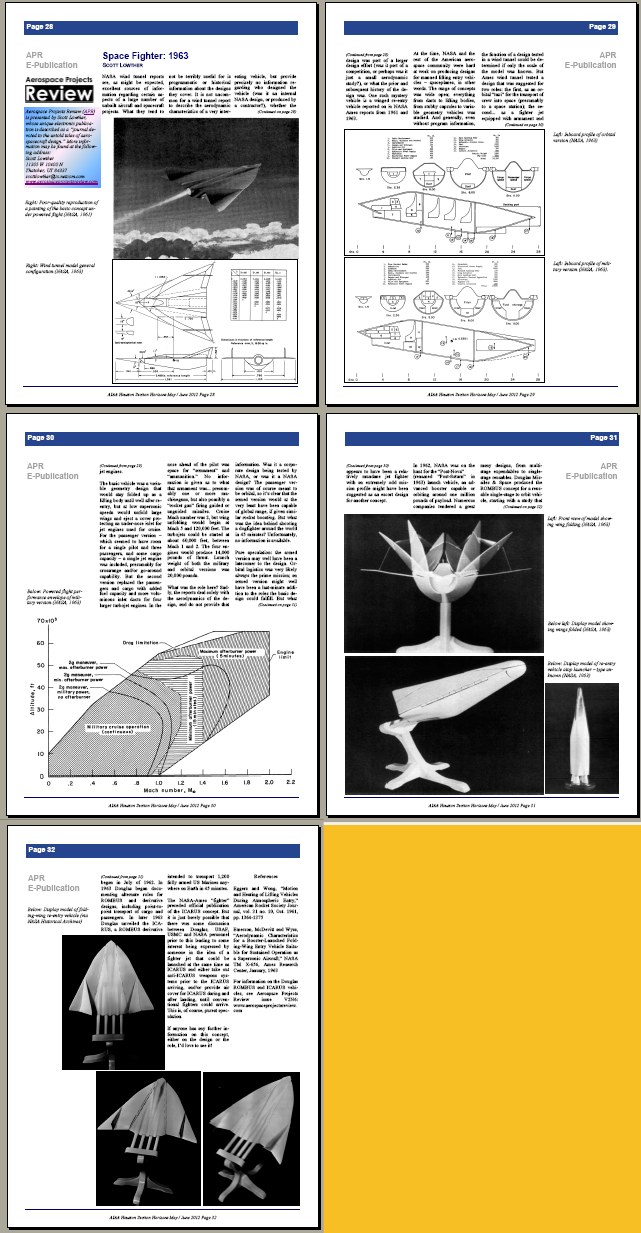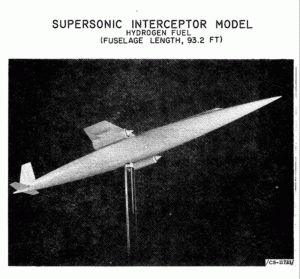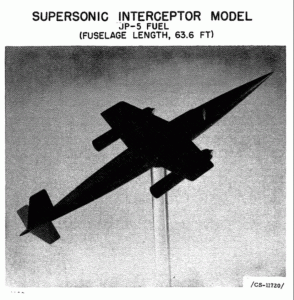In 1977, General Dynamics produced the “Sneaky Pete” design for a stealthy fighter or attack aircraft. The design was quite similar to that of the later McDonnell-Douglas A-12 Avenger II, a delta flying wing with underslung inlets and a straight trailing edge. There were notable differences: an additional inlet on the upper surface, the exhaust was on the upper surface and there was a single pilot. It also appears that the Sneaky Pete had vertical stabilizers on the upper surface that would fold flush during cruise. Performance, weights, dimensions are all sadly unavailable. Sneaky Pete was part of the design evolution leading to the ATF (eventually won by Lockheed and became the F-22), though it seems very unlikely that it would have been capable of supersonic flight, much less supercruise.
The design for what became the F-16XL began in 1977 as the Supersonic Cruise and Maneuver Prototype at General Dynamics-Fort Worth. The idea was to incorporate lessons learned in SST design into military aircraft. The SCAMP was to be a highly modified F-16 with a 56-inch fuselage stretch, an all-new cranked-delta wing, and an all-new vertical tail, along with many smaller changes. The use of computers – already new with the baseline F-16 – would allow the aircraft to be flown… otherwise unlikely, due to the relaxed static stability of the design (i.e. left to it’s own the design would oscillate in attitude and angle of attack until it went truly unstable). The SCAMP would be capable of carrying a much greater payload than the F-16, such as a sizable bombload.
The F-16XL as actually built used an F-16 vertical tail. But this earlier SCAMP design, from a February 1980 report, used a new all-moving vertical tail. Even earlier designs used all-moving wingtips, which were themselves the horizontal stabilizers from a regular F-16. While that idea undoubtedly had merit, it would not allow for missiles to be carried on the wingtips, and thus fixed wingtips were designed in.
The XP-71 was a sizable Curtiss-Wright design from 1941 for a long range escort fighter. Irritatingly little has been publicly revealed about it. This is assuredly not due to the XP-71 being such an incredibly advanced design (although it was incredibly complex), but rather due to it having been a failed concept. Armed with two 37mm and one 75mm cannon, the XP-71 was bigger and substantially more expensive than a medium bomber such as the B-25, and would likely have been less nimble than a smaller fighter. While the armament would have packed a mighty whollop, targeting an Me 109 or a Zero would have been a matter of great luck or incredible skill. The XP-71 effort lasted from 1941 to 1943.
While I’ve recently been clued in on a Curtiss-Wright report with some good drawings of an oddly swept-wing version of the XP-71 (release of further info currently embargoed), very few decent quality drawings seem to have been released. One of the very few “official” three-views is a rather small diagram from a NACA report describing a great many spin-tests. I’ve not yet located the specific test reports dealing with the XP-71.
A Bell Aircraft illustration of the D188A VTOL strike fighter. This design was described in detail in Article 34, available for both download and printed.
You can download a 5.5 megabyte version of this diagram; the link is HERE. To access it, you will need to enter a username and password. The username: the first word in the body of the text on page 6 of APR issue V1N4. The password: the first word in the body of the text on page 14 of the same issue. Note that both are case sensitive.
A three-view of the April 1962 configuration of General Dynamics’ TFX entry. This is very clearly the F-111, but with a few minor differences. The most obvious are the different inlets and the tail “cone.” Here, it appears that at least for the USAF version, the tail cone was meant to angle downwards… presumably forming a ventral fin to aid in stability (or perhaps aid in maneuverability).
Other design features that would change include the profiles of the dorsal and horizontal stabilizers.
The F-111 was one of those aircraft for which a *vast* number of designs were put forth. While General Dynamics won the contract, they went through a long design development for their final design. As of December 1961, the design was clearly *almost* the F-111 as it would eventually be built, but not quite:
I have this artwork… and nothing else. It depicts a VTOL aircraft that apparently uses augmenter technology for vertical thrust, and has an air cushion landing system. These would seem to place the design in the late 1960’s, maybe early 1970’s. That was when Bell was pushing air cushion landing systems hard… and before the spectacular failure of the augmenter-wing XFV-12.
It seems to be armed to the teeth with guns, but doesn’t seem to have space for much of anything else.
The AIAA-Houston chapter newsletter “Horizons” has published an article I wrote on a 1963 concept for a variable geometry spaceplane capable of both space station logistics and combat missions. You can download the May/June 2012 here: http://www.aiaahouston.org/
A 1955 NACA concept model of a supersonic interceptor fueled with liquid hydrogen. Similar in design to the JP-5 fueled design, but with a ceiling of 80,000 feet and engines of shorter length due to the faster combustion of hydrogen.
